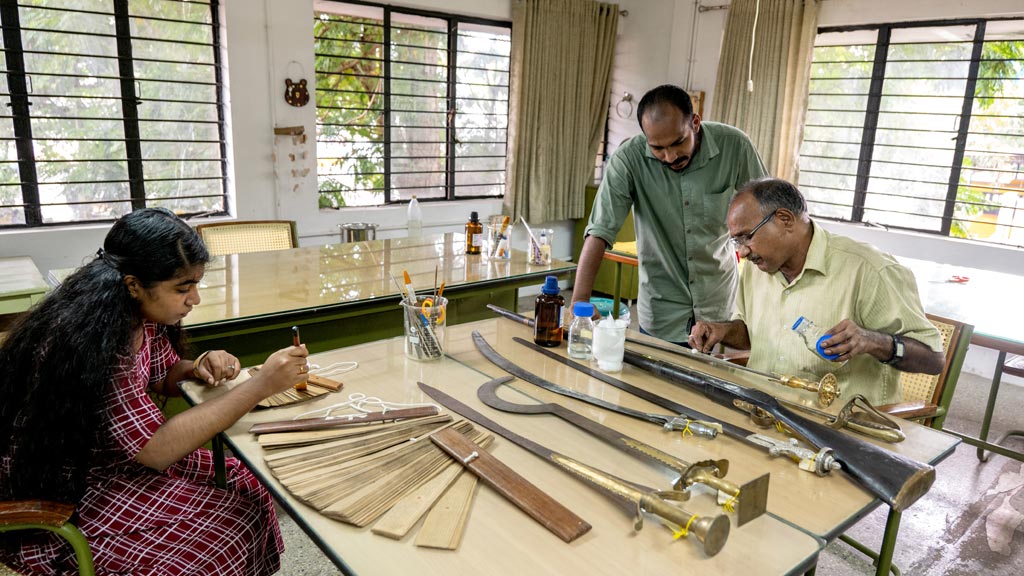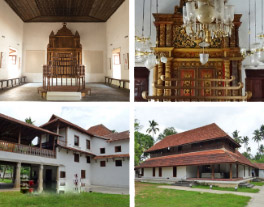Conservation Lab

To conserve and preserve history even while retaining its past glory is no simple task. Muziris, a heritage packed town and abode of such exquisite history, makes the job even more challenging.
While dealing with an artefact, it is of the utmost importance that we be aware of the ‘age of the object’. The object conserved is documented at each phase – before, during and after restoration. The two main processes involved in conservation are Preventive conservation and Curative conservation. In Preventive conservation, the reasons behind the cause of deterioration – that may vary from climatic fluctuations to factors like humidity, temperature, pollution, natural calamities, etc. – are carefully examined. Curative conservation deals with treating the object with appropriate chemicals and other substances to restore it to its original chemical and physical strength.
The Muziris Conservation Lab headed by Shri M. Narayana Namboothiri, an art restorer with more than 30 years of expertise in the industry, strives primarily to attain this possibility, while obeying every rule of the art of restoration. The office, with facilities for restoration processes, functions at North Paravur. The identity of the object, the materials it is made of and how it is made are the initial and the most significant criteria taken into consideration.
During the floods that severely affected Kerala in 2018, many artefacts were damaged in the Muziris region as well. On requisition from Paliam tharavad, the Muziris Conservation Lab collected 29 palm leaves which were in highly dilapidated condition. Preventive conservation that involved the removal of mud, separation of leaves from damp conditions, etc. was done immediately at a Lab situated at Pullut. They were all later shifted to a new Lab at Paravur on 23 September. Out of these, 12 palm leaves have already been scientifically conserved using appropriate methods that followed photographic documentation in each step. Conservation is not a mere beautification procedure, as the process aims to completely recapture the original physical and chemical strength of the artefact.
Preventive restoration is always considered better than Curative restoration. Curative restoration becomes the last option, if it is found that the artefact will not to survive unless there is an intervention of chemicals and other structural repairs. Anything beyond restoration is left to science and modern technology rather than to any experimental approaches, as conservation science keeps evolving.

